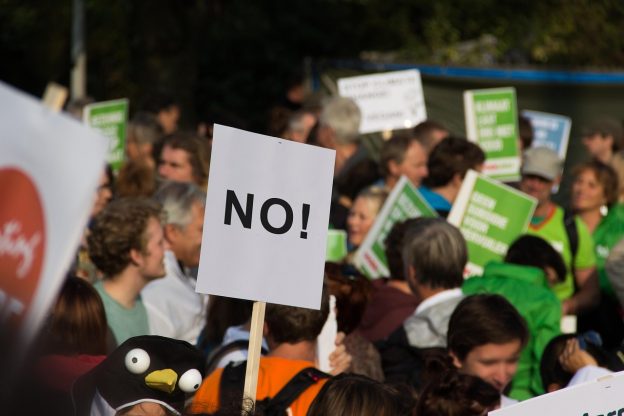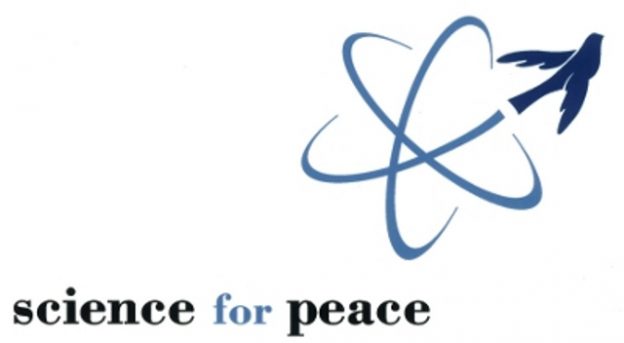The Threat
Canadians face a threat to the sovereignty of Canada and their democratic, pluralistic way of life. How do we defend ourselves?
Canada shares the longest unprotected border in the world with a country whose president has repeatedly called for the annexation of Canada. Trump in his inaugural address made his intentions clear. He stated that his administration would “expand our territory” and “carry our flag into new and beautiful horizons.” Greenland, the Panama Canal, and Canada are the three territories that he immediately had in mind. We should not take Trump’s expansionist threats lightly.
The MAGA vision is one that most Canadians reject. It involves, in the first place, the consolidation of a Trump dictatorship. This part of the agenda is well advanced. This aspirant dictatorship is committing itself, in the second place, to building, in effect, Fortress America. It is fortifying its borders, expelling migrants and immigrants of colour with the use of repellent techniques, shutting down dissenting voices and centers of power, rigging the electoral systems, occupying “blue” cities, and imposing tariffs on former allies as much as former enemies.
The rhetoric of Canada as the “51st state,” moreover, suggests that what Trump has in mind is a Fortress North America, In this conception, Canada assumes, at best, the status of a vassal state. What Prime Minister Carney neutrally refers to as a “comprehensive economic and security partnership” may have the incremental effect of trading our independence and our children’s future for a modestly beneficial trade deal – unless we hold the line.
Consider what this subjugation would entail for Canadians. We would be bound to an autocratic and declining hegemon, which, in terms of technological development and ecological survival, is on the wrong side of history. Trump champions a “fossil-fuels-or-bust” economic model at a time of global transition to clean energy. He is gutting existing incentives and infrastructure projects for expanding the green transition. The Americans are thus ceding primacy in the “sunrise” industries of the post-carbon economy to China, the rising hegemon on the global scene.
Canada, if it loses its sovereignty to the US, will thus be part of a coalition of authoritarian petrostates in geopolitical rivalry with China and its expanding set of allies. Trump’s reactionary environmental agenda alone may mobilize climate/environmental activists to join the movement for nonviolent defence.
We must resist the bleak future of Fortress North America. Yet how do we effectively respond?
The unfortunate fact is that Canada has many vulnerabilities vis-à-vis the United States. We never thought that our major security threat would emanate from our erstwhile closest ally. But now it does.
An outright invasion is not a Trump priority at this stage. The Trump government will first try to subjugate Canada via economic coercion – primarily through a trade war – disinformation campaigns conducted largely through social media, and, probably, surreptitious support for the separatist movement in Alberta. It appears that all these tactics are underway; we are already under attack.
If these tactics fail, we cannot rule out an invasion. Its probability is not zero. The pretext might be the need to secure the northern border from alleged, though bogus, terrorist plots against the USA. Or to support an Albertan separatist movement from an allegedly “stolen” referendum, or alleged suppression by an overbearing Canadian government. How would we defend our way of life – that is, defend ourselves from impending fascism – if the need arises?
Military Defence?
A military defence, in the unlikely event of an invasion, would be ineffective and highly costly in casualties and damage to infrastructure and buildings.
The Canadian Armed Forces (CAF) are outgunned by the superpower. But that is only part of their vulnerability. CAF are simply unprepared to defend Canada from the United States.
What was once our strength – integration with US armed forces – is now, in the Trump era, a liability.
- Through NORAD, we have a binational military command. Canadian officers routinely work under American commanders.
- The US owns and controls key defence systems, such as the Airborne Warning and Control Systems.
- Recently, according to Prime Minster Mark Carney, 80 percent of Canada’s defence purchases came from the US. These purchases entail a continuing dependence on the United States for maintenance, parts and updates. Critically, in certain cases, the US retains control of key operational software that governs the capabilities of the acquired weapons systems. This limitation applies to the exorbitantly expensive F-35 fighter jets and Surface Combatant warships. Our independence demands that we accept no more than the 16 F-35s already contracted.
- Our government has not rejected participation in the “Golden Dome” missile defence system. Experts have long contended that such a defence system will not only be enormously expensive and ineffective but also lead to the militarization of space. In addition, it will confirm Canada’s role as the sidekick of a fading and reactionary power.
- US control of information flows, together with Canada’s reliance on American surveillance apparatuses, create further vulnerabilities. In 2019, 80 percent of Canada’s Internet traffic was routed through communications lines and infrastructure situated within the United States. A shutdown of Internet communications in Canada might well precede an attack from the south.
- A final vector of dependency lies in the training of Canadian military personnel. Joint training is designed to facilitate cooperation and interoperability between the US and Canadian forces. The same goals govern the many joint military exercises. But such interoperability does not bode well for an independent Canadian military defence.
All these forms of dependency and cooperation make it difficult for Canadian officers to even contemplate the United States as a potential threat.
A military defence of Canada will therefore be damaging and probably unsuccessful. What of an armed insurgency? Some scholars contend that an invasion of Canada would ignite a decades-long insurgency that would lead to the destruction of the United States. Yet this scenario seems both unlikely and exceptionally violent. Canadians, apart from a few veterans, have no experience of guerrilla warfare. An effective insurgency is thus improbable, as well as destructive.
Consequently, Canada must depend heavily on the strength of its institutions and its resolute people to maintain a democratic, pluralistic and ecologically sustainable way of life. We may need organized nonviolent resistance not only to counter an invasion, but also to protest against our own government, should it implicitly opt for vassal-state status within an increasingly fascist Fortress North America.
The Case for Nonviolent Defence
Nonviolent defence is particularly appropriate to the circumstances of small countries lying on the periphery of major powers. The smaller country cannot hope to prevail through military force, or at least not without sustaining immense death and destruction (as in Ukraine).
To many, the idea that unarmed civilians could deter, and if necessary, defeat an assault and occupation by a heavily armed expeditionary force seems absurd. Yet there are many historical examples in which nonviolent movements have defeated tyrants, ousted colonizers, achieved redress of historical grievances (minority civil rights, women’s rights, landlessness, homophobia), and out-maneuvered invading forces. Gandhi was the first major historical leader to draw attention to the potential power of nonviolent defence. A highly readable recent review of civil resistance is This is an Uprising: How Nonviolent Revolt is Shaping the 21st Century by Mark and Paul Engler. Gene Sharp, the “Clausewitz of nonviolent warfare”, spent his life drawing lessons from the many historical cases of nonviolent action in general and “civilian-based defence” in particular. (Sharp’s work is available online from the Albert Einstein Institution – https://www.aeinstein.org/ ).
Nonviolence works. For the period 1900-2019, Harvard’s Erica Chenoweth (in Civil Resistance: What Everyone Needs to Know) recorded 627 rebellious campaigns against tyranny or colonial or foreign rule. More than half of these campaigns that were nonviolent succeeded, whereas only about a quarter of violent uprisings achieved their goals. Since 2010, however, the success rate of nonviolent actions has fallen. Governments became more adept at countering standard nonviolent tactics through “smart repression”; new ones need to be invented.
Although nonviolent resistance can fail,, the historical record nonetheless bolsters the case for organized nonviolent defence. This form of warfare is essentially the application of civil resistance tactics to deter or defeat an occupation.
Three exemplary cases of nonviolent defence are Denmark’s response to an invasion by Nazi Germany, the Czech response to the invasion by Warsaw Pact armies to terminate the “Prague Spring” of liberalization in 1968, and the Ukrainian response in the early weeks of the Russian invasion of 2022. In the Danish and Czech cases, the government realized an armed response to an invasion would be quickly and violently suppressed. They thus side-lined the armed forces and called upon their citizens to engage in nonviolent resistance. The spontaneous actions in all three cases achieved some remarkable successes. One can only imagine how much more effective defense would have been if the people had received training in nonviolent strategy and tactics and had organized beforehand to resist in a disciplined manner. In Ukraine, the unarmed resistance was soon overtaken by battles between conventional armed forces.
Civilian-based defence was taken seriously in Finland, as well as the Baltic states and Poland following the latter group’s nonviolent independence struggles in 1990-1991. When these countries acceded to NATO (between 1999 and 2004) and sheltered under the nuclear deterrent provided by the United States, civilian defence fade into a pale civil defence.
Canada today, however, is in the same position vis-à-vis the US as the Baltic states were in vis-à-vis the Soviet Union in the 1990s. We can rely neither on a nuclear deterrent nor powerful allies to deter an attack. Our European allies would condemn US aggression, but they would do little more. We can depend only on ourselves.
Deterrence is the primary goal of nonviolent defence. The establishment of a voluntary and trained civil defence corps signals to a potential aggressor that Canadians are united and resolved to retain their independence and their values. Such an organization of volunteers would engage in training in how to handle crises, such as extreme weather, floods, wildfires, and health-related, in addition to invasions, cyber-attacks and disinformation. Unity and preparedness may discourage not only an invasion, but also destabilization campaigns.
Nonviolent defence must always be accompanied by a willingness to negotiate any genuine grievances. However, if an attack does come, Canadians are prepared.
In Canada, as elsewhere, nonviolent struggle is most effective when it draws upon trained volunteers. They will understand the importance of maintaining a disciplined nonviolence despite provocations. Volunteers will be aware of the variety of tactics (more than 340, according to Michael Beer’s useful manual), and the importance of versatility in shifting tactics as circumstances change. Nonviolent defence, as decentralized asymmetric warfare, requires groups thinking through strategic objectives via discussion.
We do not need to reinvent the wheel when it comes to training. We can draw upon the previously mentioned accumulated wisdom of civil resistance. Let’s say we aim to train one percent of the Canadian population in 10-12 hours, in sessions of two hours length in the evenings and weekends.
This nation-wide training and organization would be facilitated if the Canadian government were involved in providing facilities and perhaps instructors in all regions of southern Canada. While nonviolent civilian defence must remain nonpartisan, that does not mean that the government should not lend logistical support.
But dependence on the government is ill-advised; governments can change, possibly leading to the termination and collapse of nonviolent defence.
Even if Canadians never face a military invasion, this voluntary effort provides major benefits. Canada is heavily dependent on the United States, culturally, economically, and militarily. As a national project, a voluntary Canadian Civil Defence Corps will foster a healthy sense of national identity and collective efficacy. The tools of nonviolent civilian defence, in addition, are useful in protecting Canada not only against annexation, but also against any future governmental surrender or authoritarian challenge. Free people should always be prepared to protect their freedom.
Next Steps
A Canadian Coalition for Nonviolent Defence formed in June 2025 with members throughout Canada. If you would like to join this coalition, as an individual or an organization, or receive further information, please contact me at info@scienceforpeace.org .
The Coalition considers that the immediate priorities are these:
- Establish local chapters of nonviolent defence throughout the country. Realistically, each chapter would comprise 10-15 trained volunteers of all ages and genders and would draw on allies in the climate, Indigenous and social-justice movements as well as the peace movement. The numbers will expand over time. These chapters would be ready to function as the nucleus of a nonviolent defence in whatever region of Canada an incursion might take place. Even such a small number of trained volunteers places Canada in a better defensive position than obtained in Czechoslovakia in 1968 or Ukraine in 2022.
- Each chapter should develop a contingency plan. The chapter, in communication with local social-justice, Indigenous, climate, environmental, religious, and other organizations, would decide where and when they would congregate in the event of an invasion. A designated meeting place is essential; it may be difficult to communicate after an attack as the US may shut down digital communications.
- Place pressure on the government to remain strong and allow nonviolent training groups to utilize federal facilities throughout the country, at no charge, to conduct training.
- Work out an amicable arrangement with the Canadian Armed Forces about the respective roles of the CAF and NVD in the defence of Canada. This arrangement must acknowledge that the logics of nonviolent defence and armed defence are in conflict. We need some creative thinking on this central issue.
- Forge ties with nonviolent movements in the United States so that any action against Canada will spark widespread protests in the homeland. It is obvious that most Americans are our allies, not our enemies.
Nobody wants to contemplate that we may need to defend ourselves from our long-time ally. Yet the possibility of an invasion cannot be denied, and we must be prepared for that eventuality Furthermore, the preparation itself is empowering, because a people united, and trained in nonviolent action, can never be defeated.





